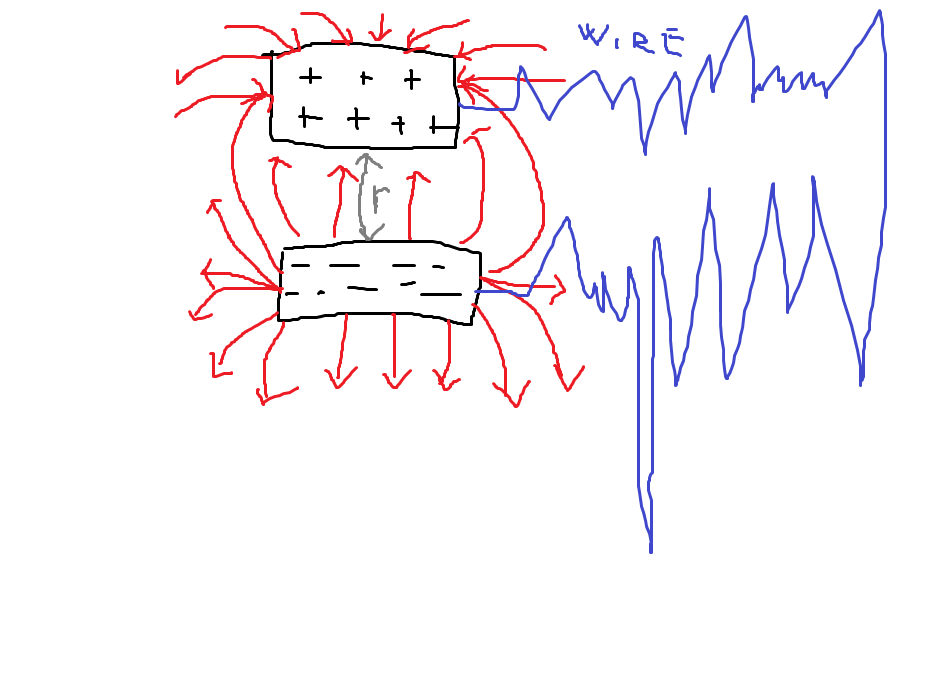I'm stuck thinking about this situation. I imagine that there are two oppositely charged objects at short distance $r$, put inside an insulator (Can I say air?). They generate a net elctric field, but since they're apart there's no electrons flowing. Then I connect them with a bizzare conductive wire and electrons start flowing till balance is reached.
I wonder:
How and why the electron flow will follow the shape of the wire?
Is it beacause the net electric field?
Can we say that they prefer to follow a strange path through a conductor than a straighter ,shorter one thorugh an insulator?
I tried to make a picture of the situation I describe. Since for my understanding it's easier to picture electrons flowing, I drew a reverse electric field so that charge will move from low to to high potential (hope I can do that!).
I hope it doesn't seem a too awkward question. If there is any problem with this question please make a comment and I will try to edit it. If there's any problem you want address don't hesitate.

